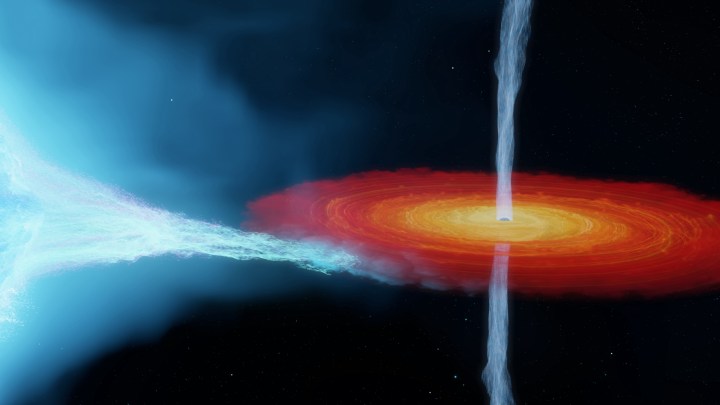
The Cygnus X-1 system is home to one of the world’s most famous black holes. It was the first-ever black hole detected and has become one of the most studied objects of its type. It was even once the subject of a bet between two renowned physicists: Stephen Hawking and Kip Thorne. Thorne bet Hawking that the object was a black hole in 1974, and Hawking cheerfully conceded in 1990 once the data came in.
Now, astronomers from the International Centre for Radio Astronomy Research (ICRAR) have discovered something surprising about this oft-observed object: It is both more massive and further away than previously thought.
To measure the distance to the object more accurately, the researchers used the Very Long Baseline Array — a group of 10 dishes across the U.S. — and a technique based on viewing the object from different angles as the Earth rotates.
“If we can view the same object from different locations, we can calculate its distance away from us by measuring how far the object appears to move relative to the background,” explained lead researcher Professor James Miller-Jones from Curtin University and the International Centre for Radio Astronomy Research (ICRAR) in a statement.
“If you hold your finger out in front of your eyes and view it with one eye at a time, you’ll notice your finger appears to jump from one spot to another. It’s exactly the same principle.”
The recently gathered data was also compared to previous readings taken a decade ago, which helped to reveal the black hole’s extra mass. “Over six days we observed a full orbit of the black hole and used observations taken of the same system with the same telescope array in 2011,” Professor Miller-Jones said. “This method and our new measurements show the system is further away than previously thought, with a black hole that’s significantly more massive.”
The new results show that the black hole has a mass of 21 times the mass of the sun, which is 50% more than was previously thought.
Another oddity about this particular black hole is that it has a supergiant companion star which is 22 times the size of the sun. This supergiant and the black hole orbit around each other close together and very fast — completing an orbit every five and a half days.



